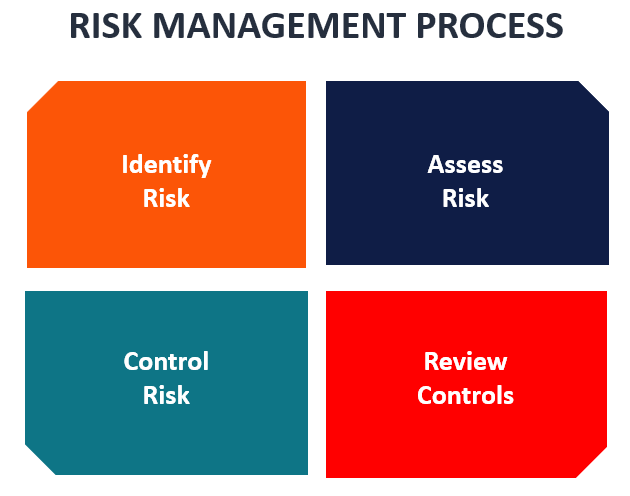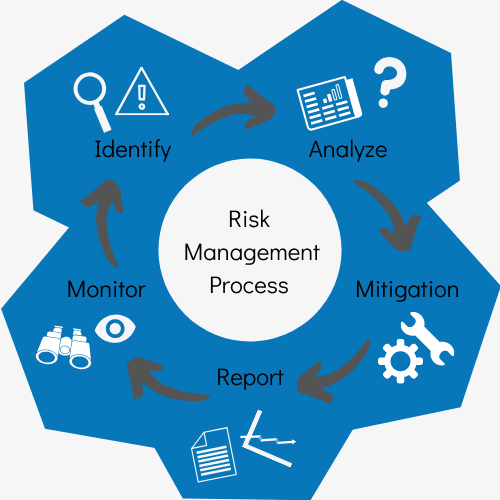The Vital Importance of Risk Management in Protecting Corporate Assets
The Vital Importance of Risk Management in Protecting Corporate Assets
Blog Article
The Crucial Relevance of Risk Management in Getting Business Goals
In the swiftly progressing business landscape, the capability to browse uncertainty has actually become a vital. This is where Risk Management actions in, giving a structured technique to recognizing, assessing, and mitigating possible obstructions to proceed. It's greater than simply a safety action - it's a strategic device, fostering durability and advancement. As we check out the critical role of Risk Management in attaining business objectives, one can't ask yourself yet help: how does this translate into real-world success?
Comprehending the Concept of Risk Management in Company

The Important Duty of Risk Management in Strategic Preparation
Incorporating Risk Management into calculated preparation acts as a secure for organizations, anchoring their lasting strategies with a solid foundation of readiness and durability. Risk Management uses a framework for anticipating unpredictabilities and creating ideal actions, making certain the organization's survival and prosperity also in the face of hardship. By incorporating Risk Management right into calculated planning, companies can transform these unpredictabilities into opportunities for development and development.

Techniques for Identifying, Assessing, and Focusing On Dangers
The procedure starts with Risk recognition, using devices such as SWOT analysis, which helps in pinpointing prospective risks and chances. Next off, Risk evaluation is performed to establish the possible effect and chance of each Risk. Threats are prioritized based on their possible influence and possibility, allowing organizations to concentrate their sources on critical risks.
Guarding Business Workflow Via Reliable Risk Management
In the business landscape laden with uncertainties, reliable Risk Management plays a critical function in protecting business procedures. By recognizing and evaluating potential risks, Risk Management makes it possible for companies to establish robust backup strategies. Companies have to spend in detailed Risk Management strategies to guard their procedures.

Transforming Possible Dangers to Opportunities: The Power of Risk Management
A proactive approach to run the risk of Management includes determining, analyzing, and prioritizing risks to create approaches that turn them into possible benefits. Hence, by leveraging the power of Risk Management, companies can not just secure their operations but also spur growth and achieve their goals in an unpredictable company environment.
Situation Studies: Success Stories of Risk Management Driving Business Objectives
Successful application of Risk Management methods has actually generated outstanding lead to various services, emphasizing the benefits of this technique. International firms like Microsoft and Google, for instance, have leveraged Risk Management find more information to decrease threats and make use of chances, driving their business objectives forward. Microsoft's proactive Risk Management approach helped it pivot promptly throughout webpage the 2020 pandemic, transitioning to remote job smoothly, therefore keeping performance. Google, by analyzing and mitigating possible dangers in its cloud-based solutions, has actually ensured uninterrupted service, thereby reinforcing consumer count on. These instances illustrate just how successful Risk Management can not just guide companies free from possible risks but also direct them in the direction of their strategic objectives. Thus, Risk Management is integral to the search of business goals.
Conclusion
Finally, Risk Management is fundamentally crucial in achieving business objectives. It offers a methodical approach to determining, assessing, and attending to possible risks and opportunities. Even more than simply mitigating risks, it likewise cultivates advancement, strength, and sustainable growth. By including Risk Management into calculated planning, services can better browse uncertainties, guard procedures, and capitalise on opportunities, thereby aligning with long-term objectives.
At its core, Risk Management is the procedure of recognizing, assessing, and dealing with prospective hazards that can negatively affect a company's objectives or operations. Next, Risk assessment is conducted to determine the prospective effect and possibility of each Risk. Risks are prioritized based on their prospective influence and chance, allowing companies to concentrate their try this website sources on critical threats. By identifying and evaluating prospective dangers, Risk Management allows companies to establish durable backup plans. A proactive strategy to risk Management involves identifying, examining, and prioritizing risks to create techniques that transform them into potential benefits.
Report this page